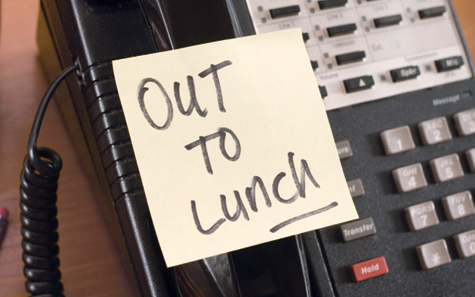A recent post on Facebook about a coffee cart at Fieldays highlighted some real challenges about rest and meal breaks.
Tired employees are dangerous. They can make mistakes that could be fatal. As an Employer you are required to allow and ensure your team can take breaks to rest the body and the mind. Rested workers are more productive and in turn, safer.
It is often easier in concept than reality, especially if you run a small business, where there is just you and one other employee, or you own a retail shop where your employee works alone while you are only on site a few hours a day, or a busy café when the break times are the busiest times for customers.
Sometimes employees may say they do not want to take their breaks, they are good, happy to work through. This might be true at the time, but check in with them in six hours, the sentiment may not be the same.
It is a legislative requirement of all Employers to provide adequate rest & meal breaks. The labour government changed legislation, removing the ability to pay compensation instead of giving breaks. This used to be the ‘work around’ for sole or small businesses, but legally you cannot do that anymore.
But what is important to note now is that there is flexibility as to when you can schedule the rest break.
Have a think about the reality. Talk to your team, ask them what they think will work for them.
The recommendation is:
2-4 hours, one 10-minute paid rest break
4-6 hours, one 10-minute paid rest break, one 30-minute unpaid meal break
6-10 hours, two 10-minute paid rest breaks, one 30-minute unpaid meal break
And so on….
Click here for further rest & meal break information from Employment New Zealand.
The challenge for a busy café is if an employee starts work at 8am, the recommendation would mean the rest break should be between 10am-12pm, which also happens to be the busiest time for a café.
Chat to your team, is it worth getting them to set up for the morning, and then roll out staggered breaks from 9am, have someone available to fill in for them. Then as soon as the lunchtime rush is over, next stage of breaks can commence, or can you have someone fill in during the busy period so that they do get that break. One extra relief employee during these break times can equal many rested employees.
Likewise in a retail shop with a sole charge employee, perhaps you can agree to close the shop for 10 minutes, at the agreed time, ensuring the break is taken and your employee gets that important rest time. The time will have to be at the least busy and agreed by both parties.
It is important to understand the employee’s situation outside of work too. If you have got a student straight out of school, working weekends, they will not be used to working 6-8 hours straight with no break. They usually head into school for the day, move classrooms, maybe have 30-minute breaks in between classes so the adjustment or expectation to work solidly for extended hours could be too much. Think about where they are coming from and how this will affect them. It is not ok to just expect them to ‘harden up’ anymore.
Working 10 hours with one break is not going to cut it. Rest breaks are a matter of health and safety. Employers must take all practicable steps to ensure that fatigue in the workplace is not likely to cause harm.
And most importantly, document it, if you and your employees agree to suggested time change for rest & meal breaks to suit the nature of your business, keep a record of it, sign it and file it!

Tags: rest and meal breaks